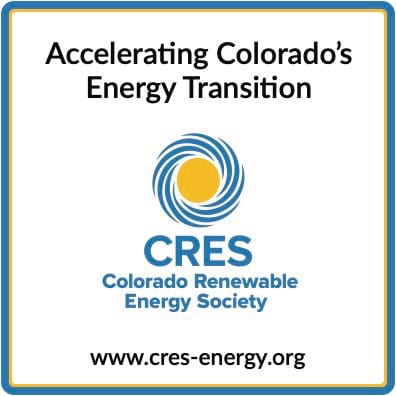These four Front Range utilities plan to explore how they might meet growth in demand by sharing electricity with improved transmission
by Allen Best
Four electrical utilities that deliver electricity from Colorado Springs to Fort Collins have a common problem. All have rapidly expanding demand, and all, in turn, need to add new sources of generating capacity.
Can they save money by sharing electricity? Improved transmission would be crucial. The four power providers — Colorado Springs Utilities, CORE Electric Cooperative, Platte River Power Authority, and United Power — have agreed to explore potential synergies to achieve common purposes.
Together, the four utilities provide electricity to 1.5 million Coloradans, collectively putting them just behind the 1.6 million customers of Xcel Energy, the state’s largest electrical utility.
The utilities began talking about this last November, and they are just beginning the work of figuring out how they might collaborate.
“This is a positive first step in exploring alternative ways for our four utilities to support growth and resiliency across our service territories,” stated Pam Feuerstein, chief executive of CORE. “Additional transmission would enable CORE to continue providing affordable and reliable power to our members, now and into the future.”
One option might be to use existing rights of-way to erect upgraded transmission capacity, similar to going from a two-lane highway to a four-lane highway. In this case, the utilities might decide to create a 345 kV electron highway. That’s as large as they get in Colorado right now, except for a new 500 kV line that nicks the state’s corner northwest of Craig.
“There could be some commonality where CORE, for example, has a 115kV transmission line, that those rights of way could be used to develop a larger project,” said Feurstein. “It’s way too early to tell at this stage. This is really just the beginning of us exploring opportunities.
Also an option is to create expanded transmission bypassing metropolitan Denver, in more rural areas served by United Power and CORE.
The electrical utilities share common borders. The service territory of Colorado Springs Utilities, for example, comes close to that of CORE, which serves Castle Rock and Parker and other parts of rapidly growing Douglas and Arapahoe counties.
CORE’s expansive service territory — from 60 miles east of Denver to 65 miles west of Colorado Springs —has close proximity to Brighton-based United Power, which serves one of Colorado’s fastest growing areas along the I-76 and I-25 corridors north and east of Denver. United’s service territory extends to Longmont, one of the four municipal members of Platte River.
These four utilities are also defined by what they are not. Unlike Xcel, which provides power for much of metropolitan Denver, they report only to customers, not to private investors.
By banding together, they might be able to avoid charges for sharing electricity over the transmission lines owned by Xcel Energy or possibly Tri-State.
Congestion along the north-south lines has become a growing challenge that limits flexibility as the utilities try to meet rising demand while supporting Colorado’s ambitious carbon reduction goals.
The analogy again might be to Colorado’s north-south highways. If time is of the essence, you might want to avoid I-25 by taking an alternative route, including E-470. And in this case, an alternative might provide a way to avoid paying Xcel to use its lines.
But growth in demand undergirds the effort to achieve synergies.
“We expect our growth to continue, so addressing transmission congestion is critical,” said Mark A. Gabriel, chief executive of United Power. “United Power serves an area that is growing quickly, attracting large residential developments and new businesses alike. A more reliable transmission route would help to stabilize costs and increase reliability for current and future members in the cooperative’s service territory.”
United serves 115,000 members across a 900-square mile service territory stretching from the oil-and-gas wells of the Wattenberg Field to the foothills west of Arvada. During the last four years demand in April, to cite just one month, has grown from 350 megawatts to 500 megawatts.
CORE has more members, 170,000, but less demand.
Colorado Springs has 269,000 metered-customers in the city and in surrounding areas and has been growing at a rate of 1% to 2% in demand per year. Travas Deal, the chief executive of the city’s utilities, suggested that demand could grow much more rapidly from data centers and other businesses if the city had the electrical resources.
The city recently put out a request for proposals for 1,900 megawatts of new generating capacity. The door is open for wind, solar and natural gas and whatever else may come along. Some of that generating capacity might come from individual projects, but Deal says that the electrical generating capacity might be delivered at better prices with larger economies of scale. In other words, through shared demand.
“We understand the need, we understand the opportunities,” said Deal.
In a prepared statement, Jason Frisbie, chief executive of Platte River Power Authority, alluded to this shifted dynamic. “All options are on the table to help improve reliability and reduce costs, including opportunities to enhance transmission capabilities as we move into an organized market,” he said.
In a complementary move to help manage costs and maintain reliability, Colorado Springs Utilities, Platte River Power Authority and United Power will join the Southwest Power Pool (SPP) Regional Transmission Organization on April 1, 2026. CORE is also evaluating market participation, including the SPP.
- Will data centers show up in Colorado’s rural areas? - October 23, 2025
- Colorado tops nation in electric vehicle sales - October 23, 2025
- On Pikes Peak, earlier wildflowers and confused pollinators - October 22, 2025







It’s never clear to me what “joining” Southwest Power Pool means. In the rest of their territory, I understand SPP has recently delayed a lot of wind and solar and battery additions using arcane and obsolete grid interconnection studies. By “joining” are these utilities burdening themselves with more paperwork? Do we then need to be slaves to FERC too? If we have limited interconnections to the S & E why bother?
I know they aren’t going anywhere but it seems kind of absurd to have 40 utilities or whatever to serve Colorado with different transmission providers down the middle of them, often in parallel.
Clearly all this studying in 2025 is going to result mostly in saying in 2027 that they need more time to figure out how to meet 2030 goals. Particularly by adding other vaporware generation “choices” like jive-geo and expensive water guzzling nukes to the known quantities of wind and solar and storage and gas backup.